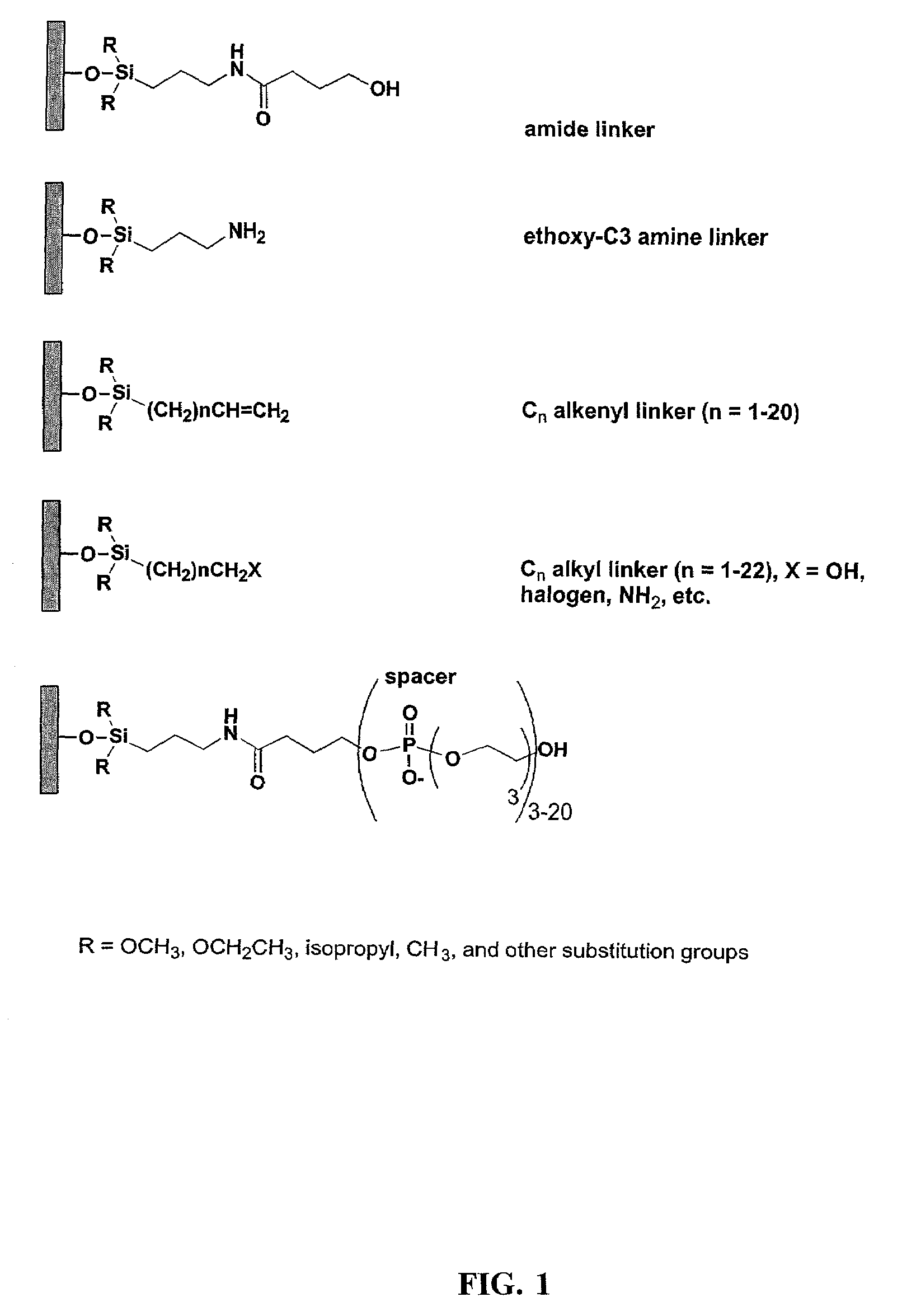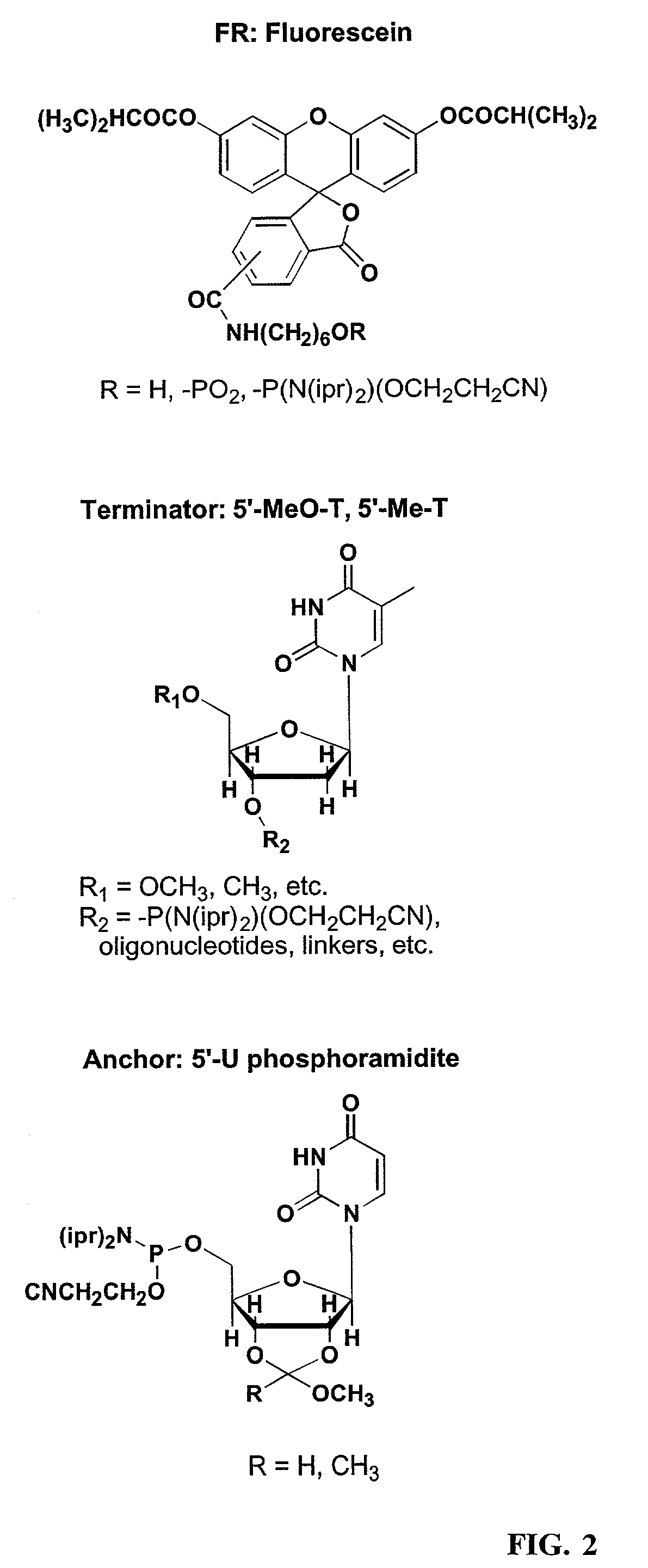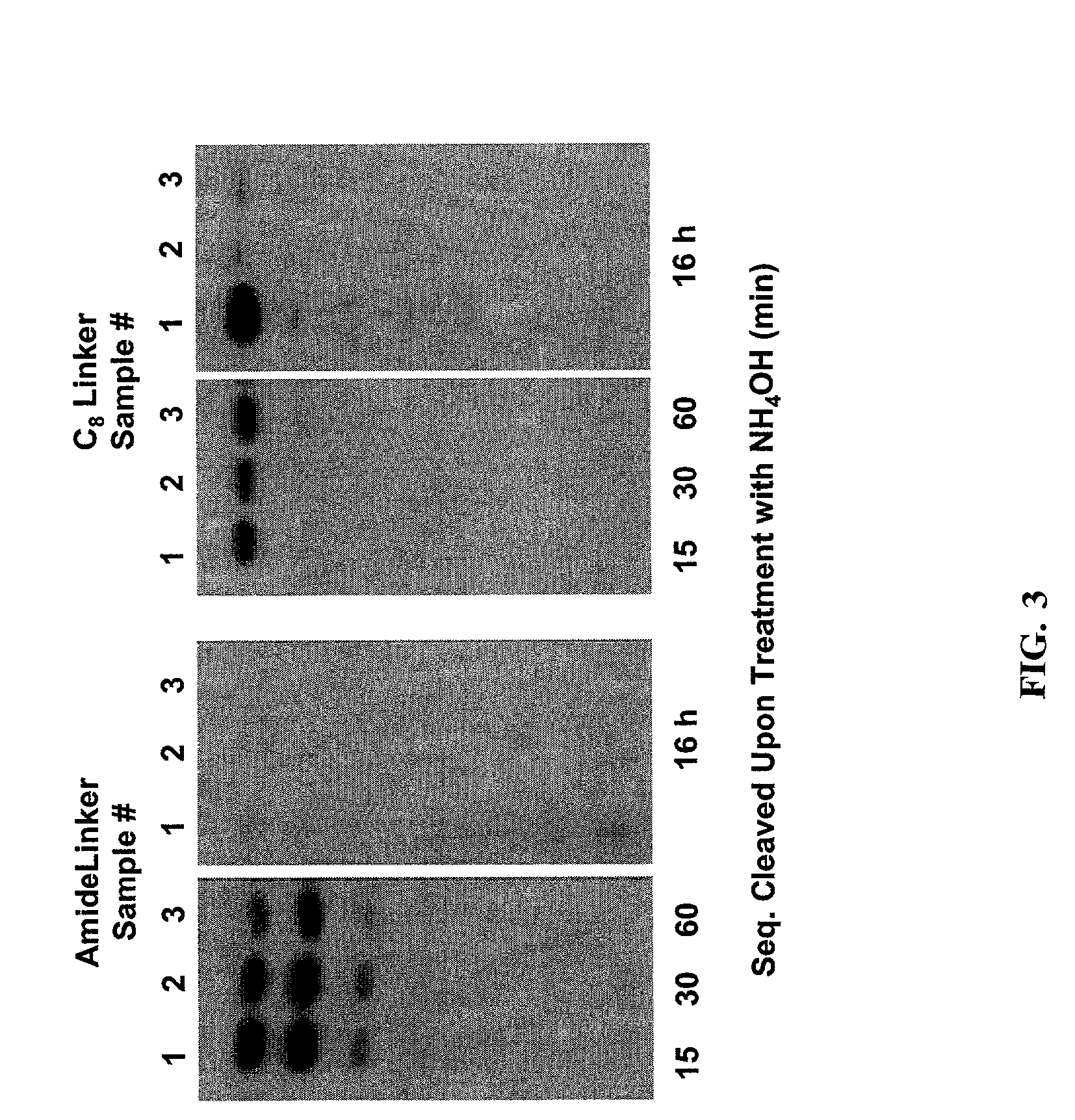Linkers and co-coupling agents for optimization of oligonucleotide synthesis and purification on solid supports
a technology of oligonucleotide synthesis and solid support, which is applied in the field of optimizing the synthesis and purification of synthetic oligomers, can solve the problems of serious constraints on the reaction, and achieve the effect of improving the synthesis efficiency and reducing the synthesis cos
- Summary
- Abstract
- Description
- Claims
- Application Information
AI Technical Summary
Benefits of technology
Problems solved by technology
Method used
Image
Examples
example 1
[0132]This Example describes the derivatization of glass plates with an amide linker. Microscope cover / slide glass plates and microarray plates containing multiple sites were treated with hot piranha solution (concentrated H2SO4:H2O2, 50:50 v / v) for 15 min. The cleaned surface was thoroughly rinsed with H2O then EtOH, dried and immersed in a solution containing N-(3-triethoxysilylpropyl)-4-hydroxybutyramide (FIG. 1, amide linker, 1% v / v in 95% EtOH). The reaction was left at room temperature for a minimum of 1 h with gentle shaking. Upon completion of the reaction, glass plates containing the amide linker were rinsed thoroughly with 95% EtOH and cured at 100° C. under N2 for 1 h. The derivatized plates were stored in a clean, dry container.
example 2
[0133]This Example describes the derivatization of glass plates with an exemplary alkenyl linker (C8). Microscope cover / slide glass plates and microarray plates containing multiple sites were treated with hot piranha solution (concentrated H2SO4:H2O2, 50:50 v / v) for 15 min. The cleaned surface was thoroughly rinsed with H2O, acetone, CH2Cl2, then cyclohexane, and dried. The plates were placed in a sealable container containing 5 mM 7-octenyltrimethoxysilane, (FIG. 2, CH2═CH(CH2)6Si(OCH3)3) in cyclohexane or 5 mM docosenyltriethoxysilane (FIG. 2, CH2═CH(CH2)20Si(OCH2CH3)3) in 4:1 cyclohexane:CHCl3. The reaction was left at room temperature with gentle shaking for 16 h. Upon completion of the reaction, glass plates were rinsed thoroughly with cyclohexane and cured at 100° C. under N2 for 1 h. The derivatized glass plates were placed in a 10 mL glass vial closed by a septum, separated by Teflon sheets. The container was purged with N2 for 10 min, and 5 mL of 1 M BH3.THF was introduced ...
example 3
[0134]This Example describes the derivatization of glass plates. Microscope cover / slide glass plates and microarray plates containing multiple sites were treated with hot piranha solution (concentrated H2SO4:H2O2, 50:50 v / v) for 30 min. The cleaned surface was thoroughly rinsed with EtOH, CH2Cl, and toluene, and dried with a stream of ultra high purity N2. The plates were placed in a closed container containing 43 mM 3-aminopropyltriethoxysilane (FIG. 2) in toluene. The reaction was heated to 60° C. for 4 min. Upon completion of the reaction, glass plates were rinsed five time with toluene and dried with N2.
PUM
| Property | Measurement | Unit |
|---|---|---|
| Molar density | aaaaa | aaaaa |
| Molar density | aaaaa | aaaaa |
| Molar density | aaaaa | aaaaa |
Abstract
Description
Claims
Application Information
 Login to View More
Login to View More - R&D
- Intellectual Property
- Life Sciences
- Materials
- Tech Scout
- Unparalleled Data Quality
- Higher Quality Content
- 60% Fewer Hallucinations
Browse by: Latest US Patents, China's latest patents, Technical Efficacy Thesaurus, Application Domain, Technology Topic, Popular Technical Reports.
© 2025 PatSnap. All rights reserved.Legal|Privacy policy|Modern Slavery Act Transparency Statement|Sitemap|About US| Contact US: help@patsnap.com



